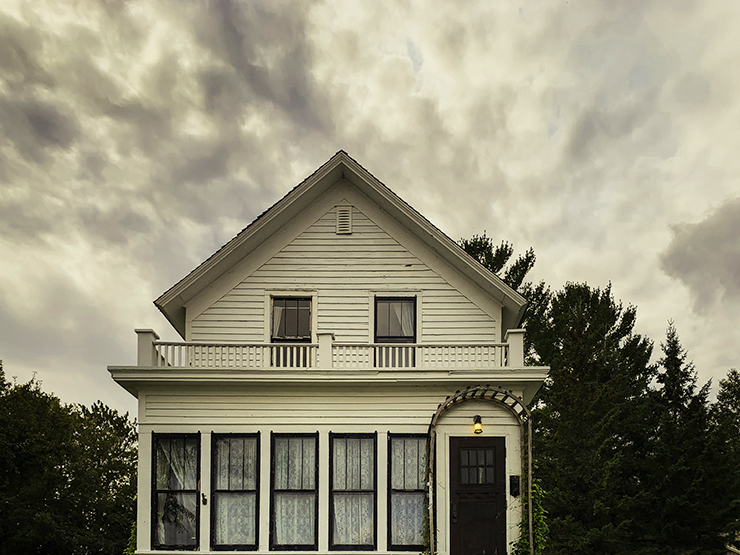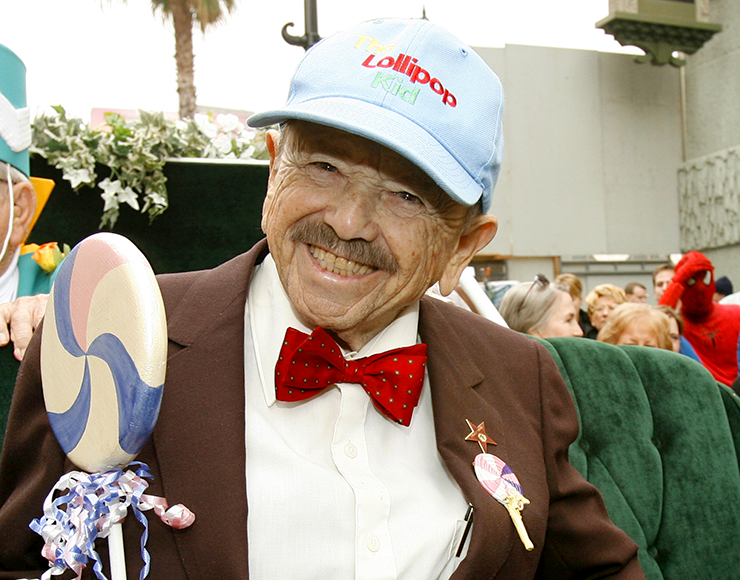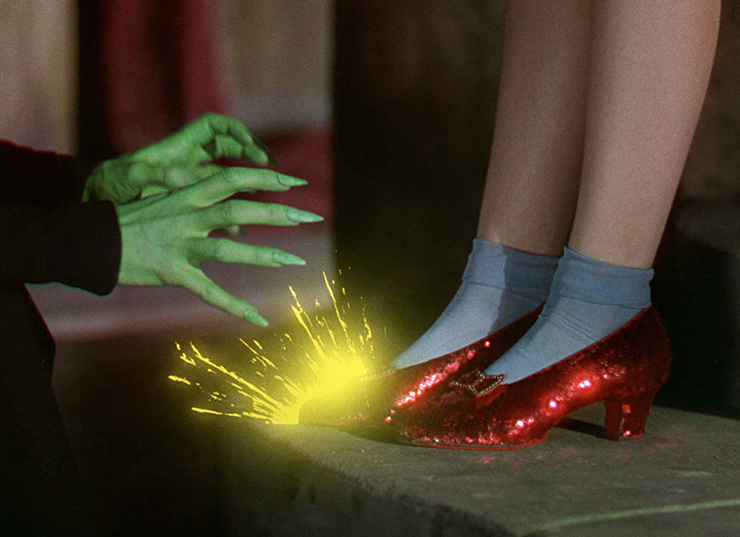Four times, Michael Shaw drove from his apartment in the San Fernando Valley to Grand Rapids, Minnesota, bearing his pair of ruby slippers, and displayed them in a Plexiglass case in the Judy Garland Museum. Three times, he took them home. In the early morning of August 28, 2005, during a summer-long stay at the museum, the slippers disappeared. There were no clues, no fingerprints. Nothing was left behind but broken glass and a single scarlet sequin.
They were known as the “traveling shoes,” one of five pairs of ruby slippers remaining from the 1939 filming of “The Wizard of Oz.” Shaw, a former child actor, would pull them out at malls and charity events and festivals, always wearing white gloves, and reminisce about Hollywood’s Golden Age, when he gamboled on the MGM lot and watched movies on Garland’s lap.
Oz fans often describe themselves as unhappy or underwhelmed in the narrow, black-and-white world of mainstream life. Garland, they believe, felt the same, battling addiction and marrying five times before succumbing to an “incautious self-overdose” at 47, according to the coroner’s report now framed in the museum. They long, like Dorothy, to live in Technicolor, “some place where there isn’t any trouble.”

The Judy Garland Museum in Grand Rapids
Oz is a faith of love and acceptance — “If you’re afraid to love, if you’re afraid to feel emotion, you can’t know Judy Garland,” one worshipper told me. Communing with the shoes in the place where Garland lived to age 4 was a sacrament. “The shoes have a tremendous power of belief around them,” says Rhys Thomas, author of “The Ruby Slippers of Oz.” “People believe they are special. They have a power that is hard to describe — they have a way of sucking the oxygen out of a room.”
As soon as they disappeared, however, things changed. Callers began flooding the Grand Rapids police with tips: “One fan would blame another fan who would blame another fan,” the investigating officer, Gene Bennett, told me. “Someone will say, ‘This guy wants them, he’s obsessed.’ I’ll say, ‘Sounds like you’re obsessed.’ And they’ll say, ‘Well, I am…but he’s really obsessed.’ It’s like a dozen people fighting over the same woman.”
This has gone on ever since: fans throwing each other under the house, as it were. One evening, a few years after the heist, I was having dinner in Grand Rapids with a Munchkin. Jerry Maren had played the so-called Lollipop Kid, welcoming Dorothy to Oz, and stood 4-foot-6 with a mustache and cigar that seemed conjoined, like a Groucho mask. (When he died, in 2018, he was the last surviving Munchkin.) We were dining on the dime of the Judy Garland Museum. Yet when I asked about the theft, Maren shouted without hesitation: “Inside job! No question!”

REUTERS/Mario Anzuoni
Actor Jerry Maren shown in a November 20, 2007, file photo.
Many suspected Michael Shaw, and still do. It doesn’t help that Shaw, a little more than a year after the theft, settled with the insurers of the shoes for $800,000. Or that he has thrown Oz fans under the house himself — all of them. “Some fanatic has paid to have the slippers stolen!” he said at a press conference announcing their disappearance. Even before they were stolen, he told me, he had grown tired of schlepping the shoes around. Being accused of stealing them himself was the last straw: “I generously made the slippers available for these people and this is the way my generosity is repaid?”
The recovery of the slippers in 2018, in an FBI sting, and last week’s indictment of the man believed to have stolen them, has brought some cautious optimism to Oz. “We are excited to see movement on the case,” the director of the Judy Garland Museum, Janie Heitz, told me. “We’ll see what happens.” But after two decades of the shoes being caught up in accusation and suspicion, the fandom remains unsettled.
“It’s obviously not closure,” Thomas says of the indictment, “it’s an upturned yellow brick in the road.” Terry Martin, the man who was charged, was almost certainly not the only one involved, he believes. “Was he part of an outfit or doing this on behalf of someone else? I don’t know. He’s stealing the Mona Lisa of Hollywood, it could very well be that he found himself with an extraordinarily hot piece of property and didn’t know what to do.”
“I don’t think any of the theories are closed and shut,” Thomas says, except maybe the “crackpot theory” of kids tossing the shoes in a mine pit — and flying monkeys.
‘I got ’em! I got ’em!’
In “The Wizard of Oz,” the ruby slippers are magically transferred to Dorothy from the still-warm feet of the Wicked Witch of the East, who died when Dorothy’s house landed on her. It’s an inauspicious origin, and in real life it can sometimes seem as if the slippers are cursed. Not because they’re otherworldly but because they’re of this world, with all its human frailty and faults.

Warner Home Video
Margaret Hamilton and Judy Garland in a scene from “The Wizard of Oz.”
When I first saw the ruby slippers, at the museum in 2004, I described them as “rather squat and completely covered in sequins, like Elvis in his later years,” which now feels like selling Elvis short. He still had fans throwing themselves at him; after filming “The Wizard of Oz,” MGM basically threw the shoes away. The studio packed up a pair and shipped them to a girl in Tennessee who had won a contest about the top movies of 1939. It wasn’t until 1970, when MGM emptied its warehouses in an auction that marked the end of the Golden Age, that the rest were rediscovered.
Kent Warner, the young costumer hired to manage the auction, adored Garland — and the slippers. And he knew just where to look for them — he’d been helping himself to costumes for years. Of the four pairs he found, he set one aside for the auction and kept the others for himself. Eventually, he sold a pair to Debbie Reynolds, who was planning a memorabilia museum, and he apparently intended to sell her another. Her assistant handed Warner the money and Warner handed over the shoes, but they were kept by the assistant: Michael Shaw.
Shaw had used his own $2,500 to buy them — “I will burn the ruby slippers before I give them to [Reynolds],” he told Thomas in 1988. When he, in turn, had the shoes taken from him, in 2005, he told me it felt as though his guts had been yanked out. He continually called the Grand Rapids police, asking for updates. He set up a website for tips. But after the settlement, the website went dark and the calls to Grand Rapids stopped. The case grew cold.
By 2013, it seemed like the curse had won out. Desperate to heat up the case, the museum hired a team of fledgling private investigators. Rob Feeney had been contracted by the investigators to drum up business and had reached out to the museum, thinking the high-profile mystery would bring publicity. “We got the case reopened,” Feeney says. In two years of looking, however, they found nothing.
The museum then decided to send scuba divers into a nearby mine pit. “We searched that thing meticulously,” says Feeney, who was retained by the museum after parting ways with the investigators. “We’d heard a consistent story from people who seemed to know. I was convinced they were in there.” They weren’t.
Finally, an anonymous benefactor of the museum offered a Hail Mary: a million-dollar reward for the slippers’ return. The museum was soon inundated with photos of footwear. “The very first call I got was from a woman in Oklahoma at a yard sale,” says Feeney. “She’s like, ‘I got ’em! I got ’em! I got the slippers!’” She did not have them.
“The most notable call I got was from Jim Henson’s son,” Feeney says, “who claimed to have found them in a closet of a house he had just moved into.” They turned out to be high-end replicas and were later auctioned off, reportedly for a large sum of their own.
“It was fun for like a day, and then it was scary,” Feeney says of fielding calls from fortune hunters. At the time, he was living in Chaska with his wife and daughter, and he began to fear for their safety. When the FBI took over the case, in the fall of 2017, he was relieved.
Nine months later, a man walked into a coffee shop in northeast Minneapolis and handed an FBI agent the real things, not realizing he was dealing with law enforcement. At a press conference in September 2018, the shoes were unveiled with few details. Except this: the ruby slippers were unmatched. In all their years of traveling, apparently no one had noticed that Warner had sold Shaw two slightly different slippers, in two different sizes.
‘Surprised and a little bummed out’
For nearly five years now, the slippers have been stashed in a government vault — evidence in the ongoing case. Few people have seen them, presumably, since the press conference.
“It’s been sad to see them locked up all these years,” says Janie Heitz, the museum director, “because they bring a lot of joy to so many people.” In a rather un-magical twist, the shoes are now owned by an insurance company. But should they eventually need a home, Heitz says, the Judy Garland Museum is calling dibs. “We would love to be that spot. It’d be a happy ending.”
The shoes have now been out of the public eye for almost 18 years. Heitz, who took over as the museum’s director a couple years ago, was in college when they were stolen. Despite the long pause, however, or perhaps because of it, she thinks the slippers will retain their fascination. They now have even more stories to tell.
“They are known as the traveling pair,” she says wryly, “and everybody’s going to want to know the story. What happened? Where did they go? We may eventually get to know those things.”
Heitz says she’s “surprised and a little bummed out” that a local may have been the thief. (Martin lives about a dozen miles from the museum.) It’s some innocence lost, a reminder that no place is devoid of darkness—even home. “Judy called it a ‘terribly happy’ time when she lived here. She had a lot of ups and downs in her life, and so have these shoes.”
Of course, these shoes were never that innocent, Thomas says. “I’ve sort of renamed these the ‘stolen pair’—they were stolen from MGM, stolen from Debbie Reynolds, and stolen from the museum.” Whatever they are now, he says, is what they have always been. A reflection of the American dream, in all its ambition and heartache and delusion. Something too good to be true. Magic.
